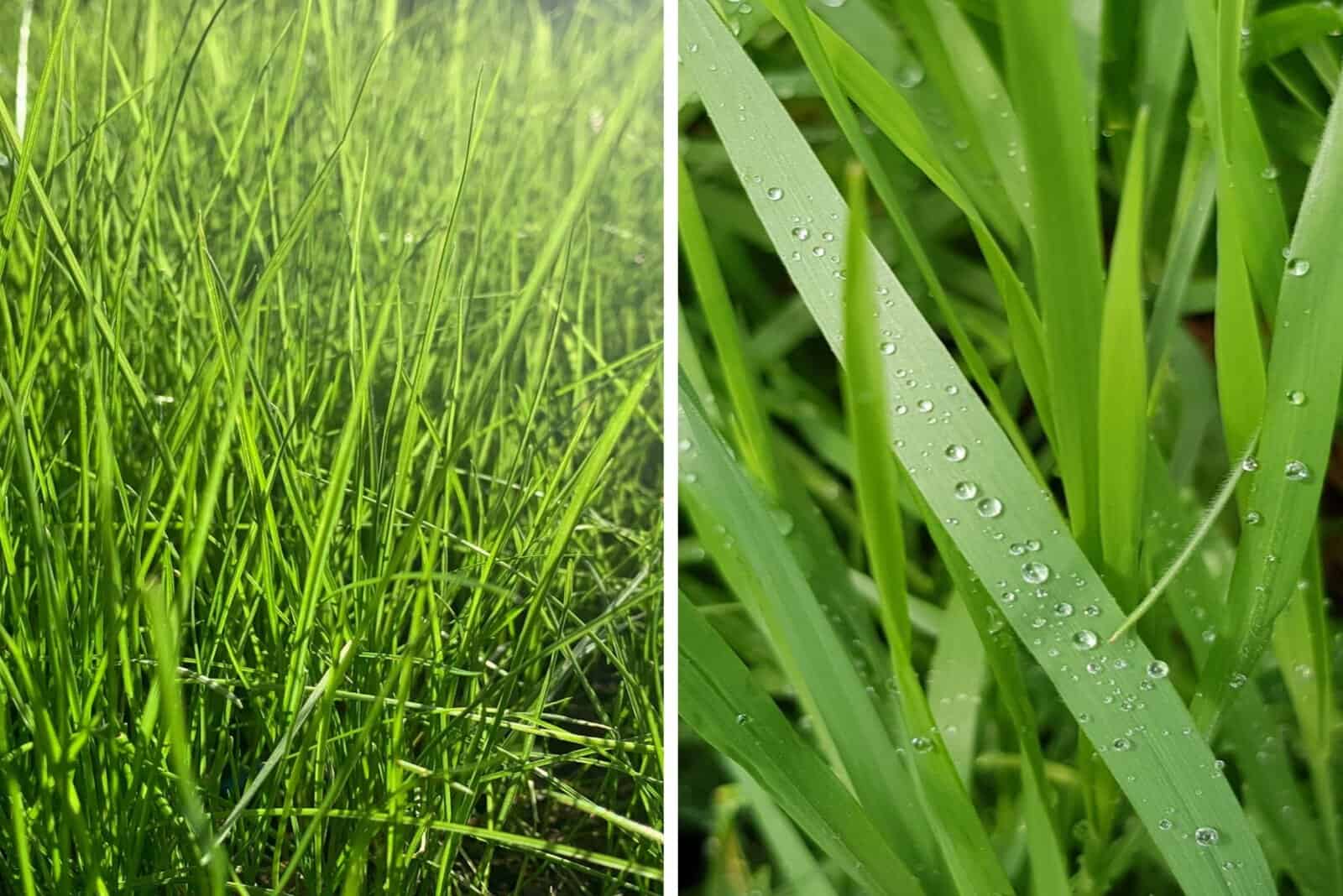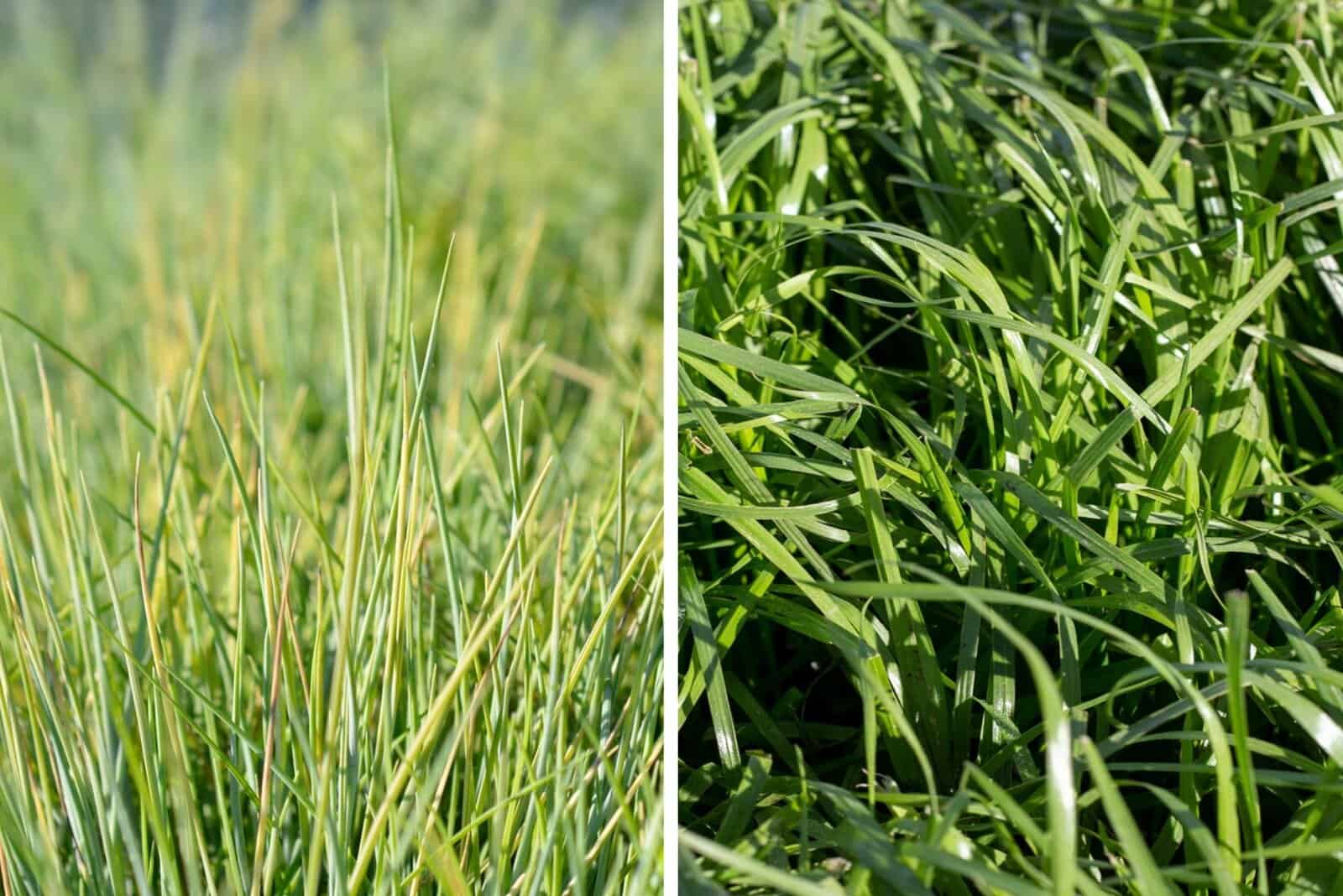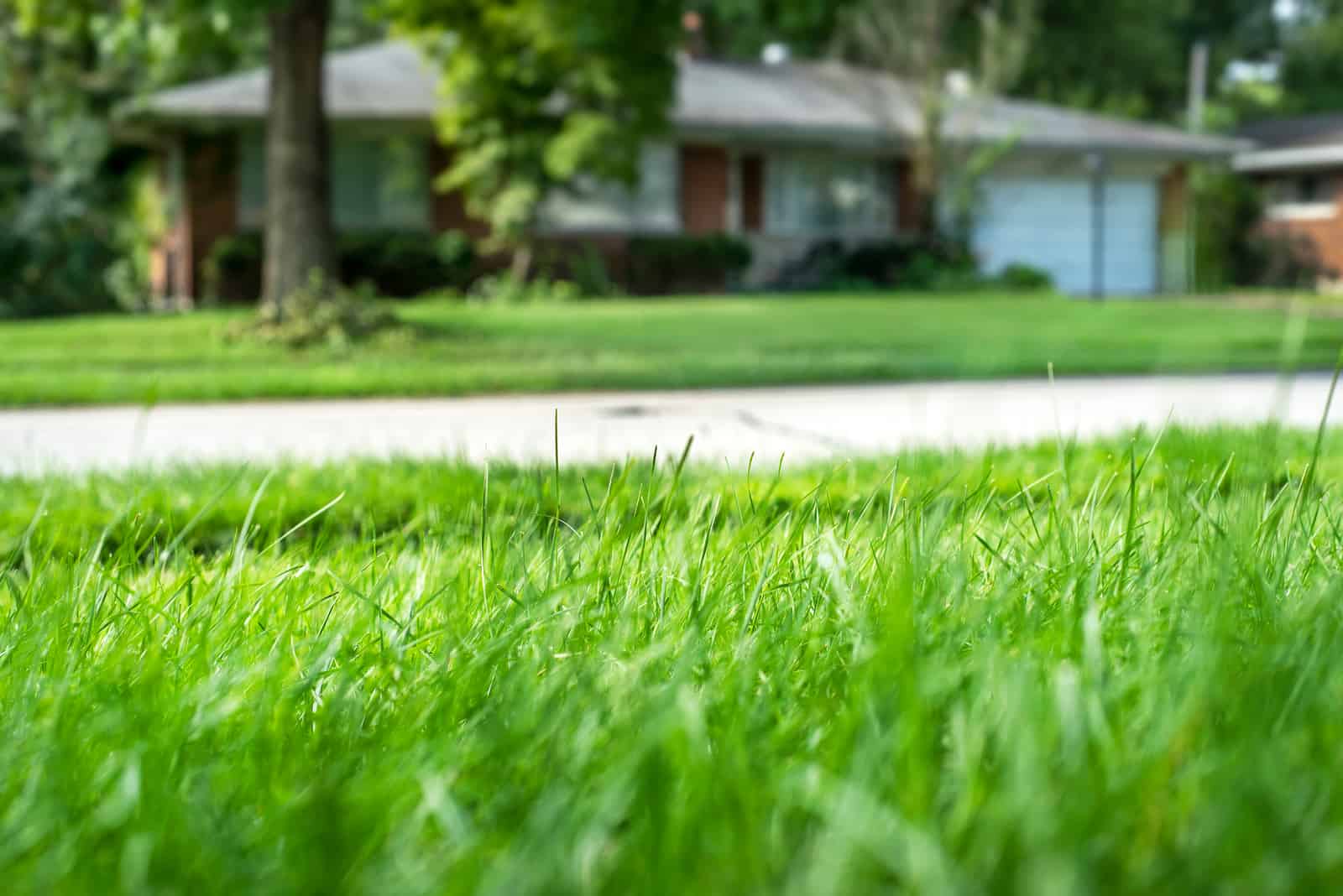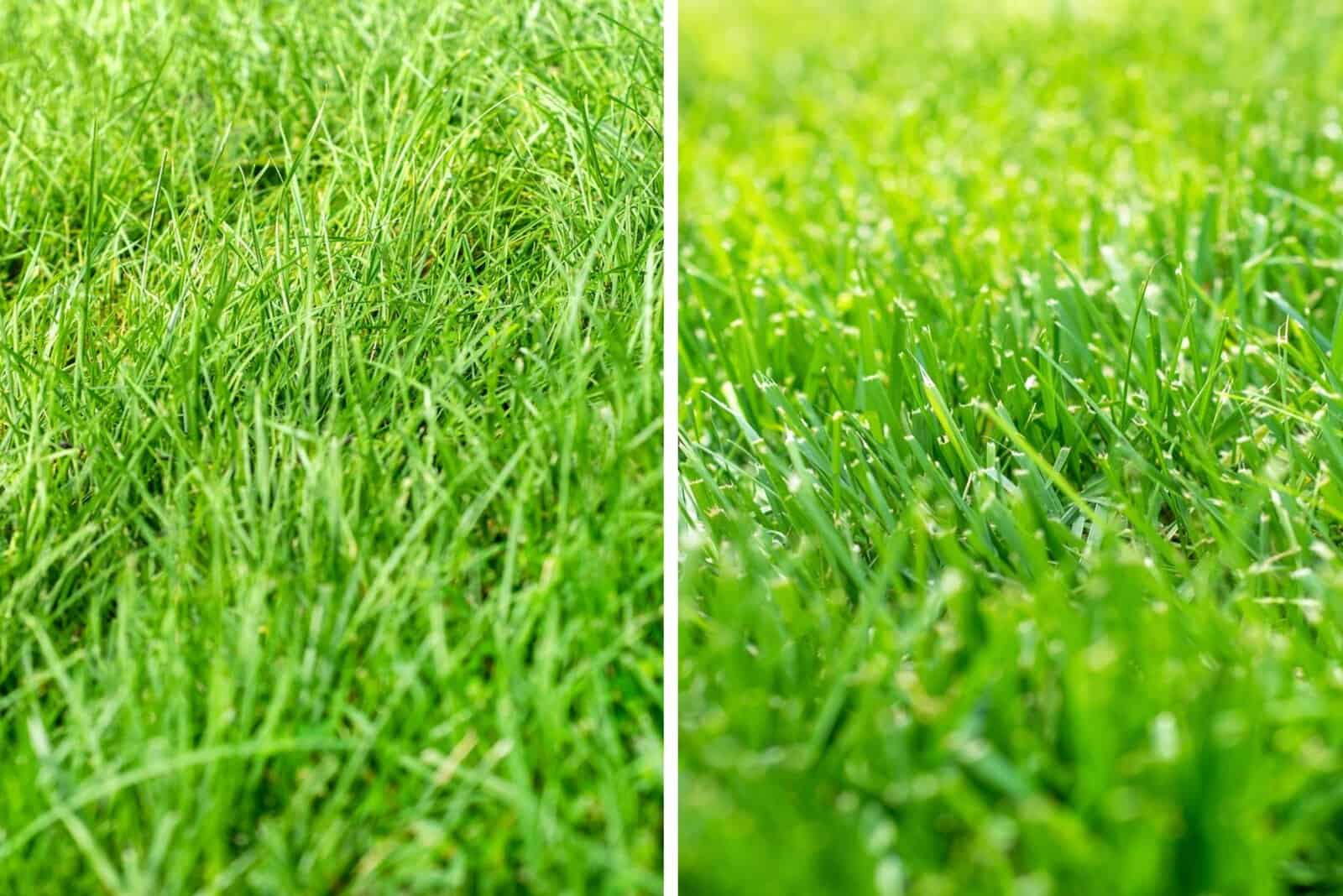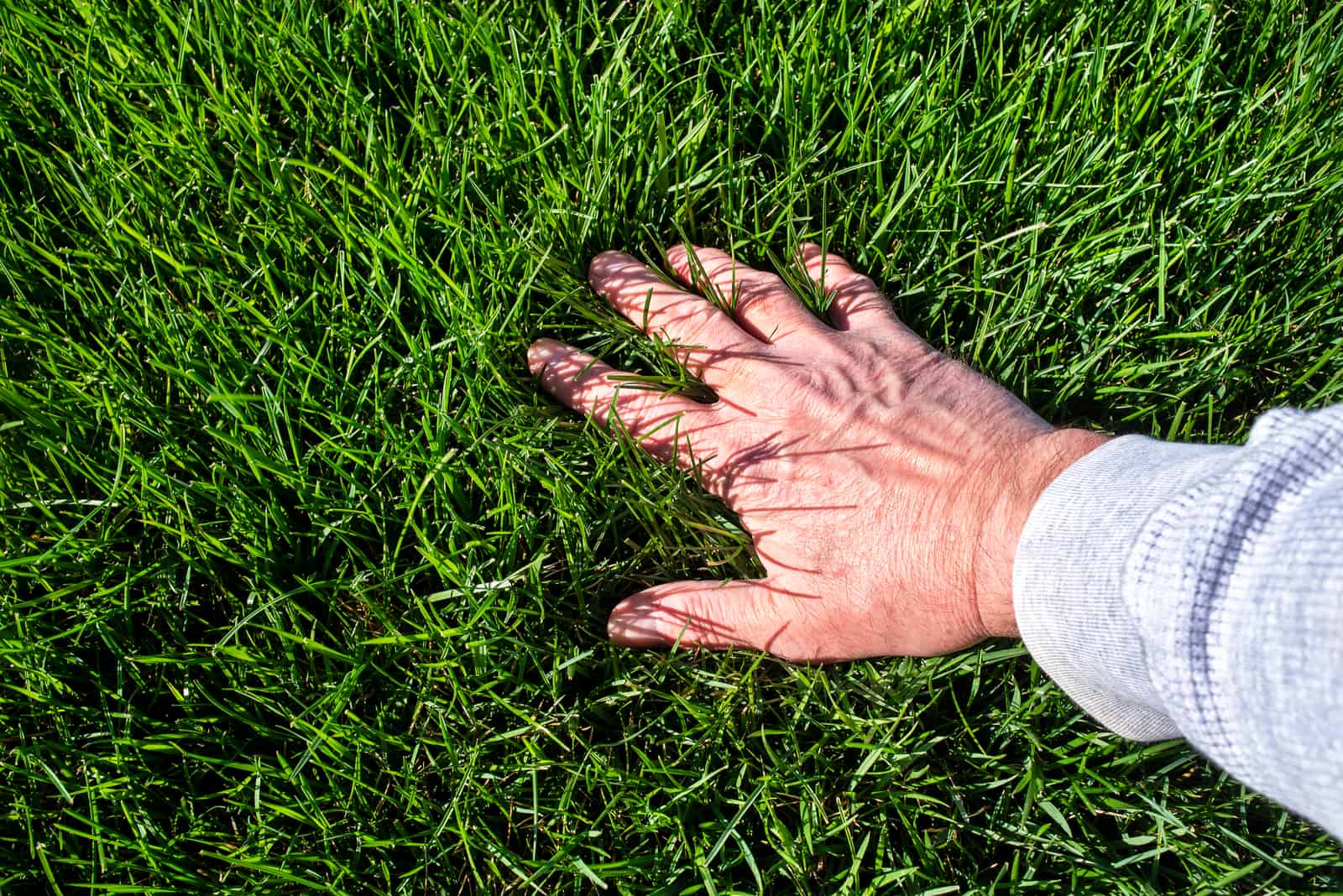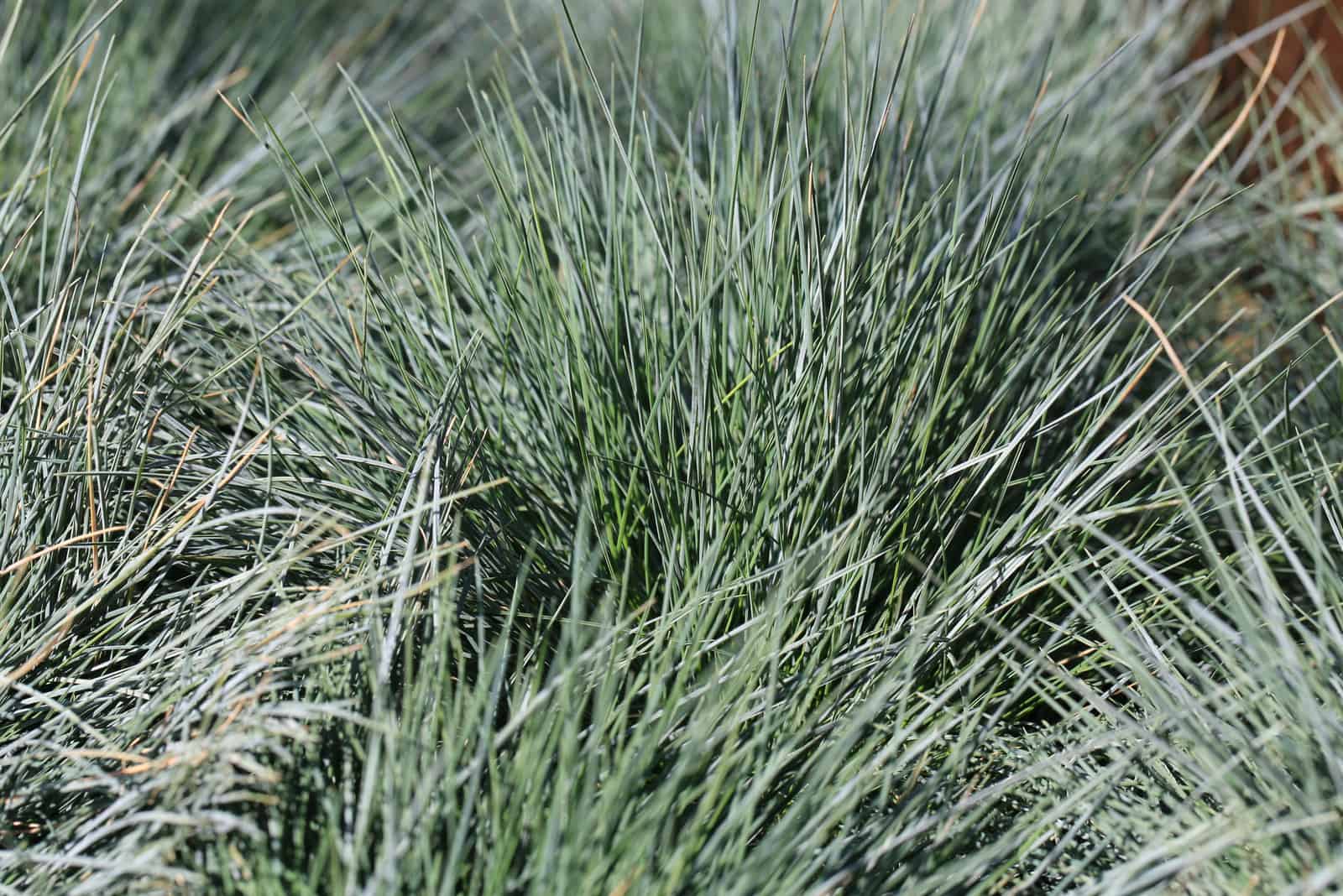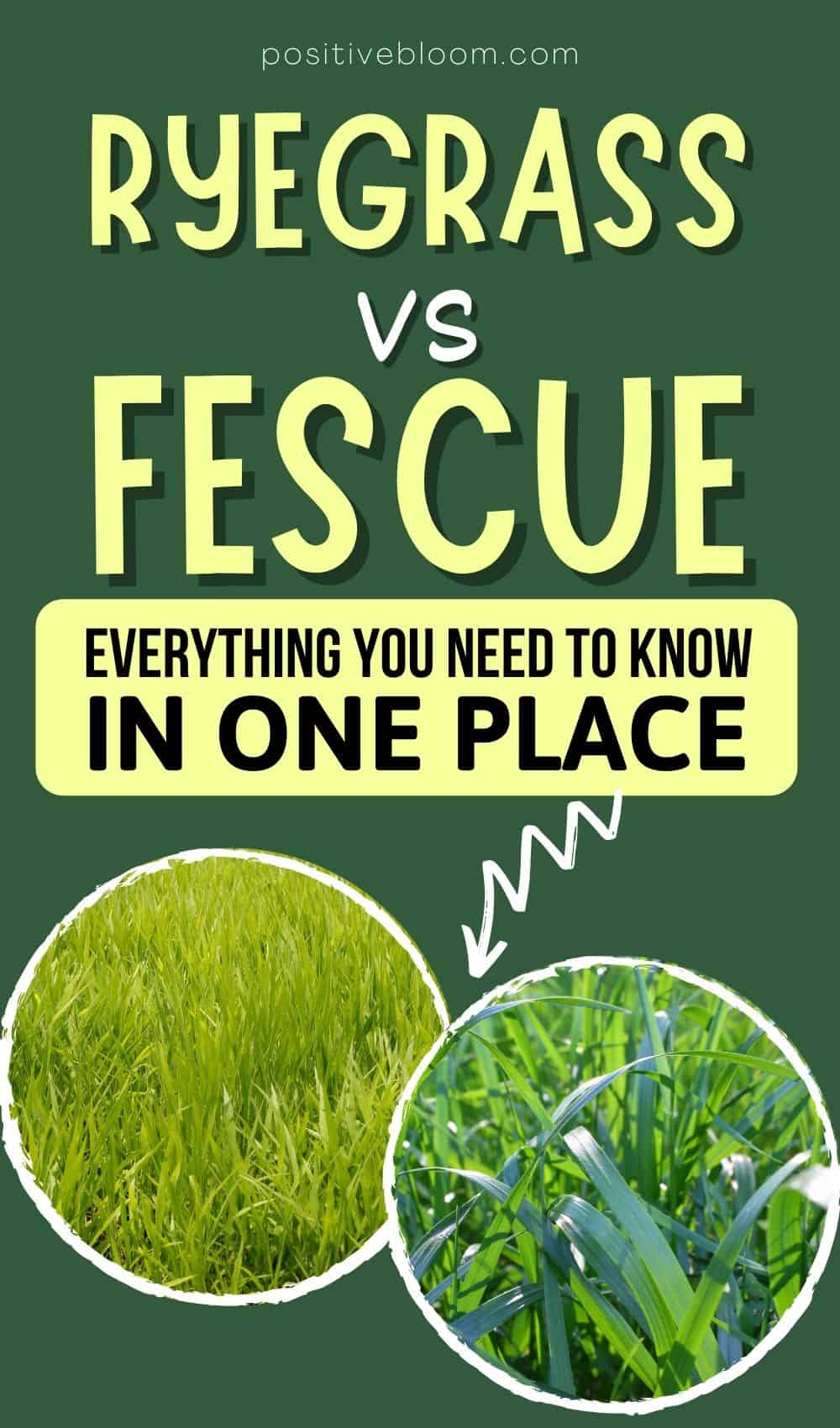I imagine that grass has never been in your top ten conversation topics, but if you move into a house with a backyard you’ll find yourself researching the different types of grass more and more.
Ryegrass vs fescue grass is a classic homeowners’ dilemma, so we have decided to help you decide once and for all which turfgrass is the best option for you and your yard with this handy article.
First, let’s look at some basic information:
[table id=24 /]
Many people prefer either ryegrass or fescue. If you’re not sure which group you belong to, read on to find out some interesting facts about them both that will help you decide which you want to use as your lawn grass.
Ryegrass vs Fescue Grass: The 3 Main Differences
There are certainly similarities between ryegrass vs fescue, but we’re here to discuss their differences.
Their color, growth habits, and typical usage can be deciding factors for those who want a perfect yard.
The only thing is to sow them as soon as possible because you don’t want to learn the hard way the answer to the question “Do grass seeds go bad?”.
Let’s begin!
Physical Features
Annual ryegrass has shiny, narrow, bright green leaf blades with no hairs. The base, which is below the ground, is often purple-red in color. Fully mature plants can reach a height of up to 35 inches (90cm).
Lolium perenne, commonly known as perennial ryegrass, has luxuriously dark green color leaves and can grow up to 1-2 feet (30-60cm).
Tall fescue grass is a variety of fine fescue grass green to dark green in color, and which can reach a height of up to 4-12 inches (10-30 cm).
On the other hand, red fescue can grow much taller, 1-2 feet (30-60cm) in fact, and has a gorgeous, deep green color perfect for any lawn.
Also, tall fescue has a coarse texture, whereas ryegrass is usually finer in texture (at least where perennial ryegrass is concerned).
Uses
There are many ryegrass varieties, but the most common are annual and perennial ryegrass. Both perennial and annual ryegrass are used for lawns and other places that need to be pristine, such as different kinds of sports fields, parks and athletic parks, and golf courses.
Annual ryegrass is perfect for wet areas as it can help control erosion due to the fact its root system goes down deep and develops rapidly. It can be used as a weed suppressant and will prevent weed growth while keeping your lawn intact at the same time.
Different fescue varieties are used as groundcover for personal yards, pastures, landscapes, etc. However, tall fescue and red fescue for instance, are never cut below 1.5 inches (3.8cm), so if you’re planning on mowing your lawn below this limit, consider some other type of grass.
Ryegrass was traditionally grown in high traffic areas such as sports fields, but now even fescue can be grown in areas like athletic parks with increased traffic, even though it was initially intended for livestock pastures as it produces high quality hay.
Durability
It is necessary to have high quality turf in a high traffic area, and perennial ryegrass is just that. It has incredibly high wear tolerance and is often included in seed mixtures with Kentucky bluegrass because it germinates quickly.
Fescue, and especially tall fescue, is another durable grass perfect for high traffic areas. They are fast-growing and relatively dense, so it works well for covering bare patches.
Fescue has deep roots and can go without water longer than ryegrass. On the other hand, ryegrass handles direct sunlight better than fescue, though fescue thrives better in shaded areas.
Ryegrass vs Fescue: Care Differences
Ryegrass vs fescue are actually more similar than different, but their differences become very apparent when you look at their care requirements. Both of these hypnotizingly green grass types are low maintenance, and yet their needs differ quite greatly.
In this section, you will find everything you need to know about taking care of these two grass species, including how they spread and how fast they grow, so you can choose the best grass for your yard.
Also, if you ensure all the necessary requirements, you won’t have to wonder “Does grass grows at night?”, as your yard will resemble a green, wide ocean in no time.
Light Requirements
Ryegrass, especially annual and perennial ryegrass, needs full sun exposure (at least six hours a day of direct sunlight) for optimal growth, color, and density. However, they cannot withstand hot temperatures, and direct sunlight would be fatal in that case.
Ryegrass can tolerate partial shade, and if your front yard receives direct light at any point during the daytime, you can go ahead and buy perennial (or annual) ryegrass as it will be great in your yard. Bear in mind that full shade is a mortal enemy of ryegrass, so if your yard is always in the shade, ryegrass is not the grass for you.
Fescue generally prefers more shaded areas. They still need a little bit of sunshine though, so partially shaded areas are their favorite place. However, it still depends on the variety of fescue in question.
Some, like blue fescue, are shade tolerant but will not flower if they aren’t exposed to direct sunlight, whereas hard fescue loves the shade.
Shade
If you have a front yard that doesn’t get much shade, but would like to make your neighbors jealous with a perfectly manicured lawn, then here are some things you can do to help your fescue thrive:
• Use fertilizers with less nitrogen in shaded areas because nitrogen hinders root growth, and the plant needs its roots to go as deep as they can get. Fertilizers rich in potassium and phosphorus are the best option for shaded areas.
• Don’t mow the grass too short. Anything above 3 inches (7,5cm) is good as this makes the surface responsible for catching limited sun rays larger, allowing the plant to gather more energy.
• Overseed! Overseeding is not optional when you grow fescue in full shade. In partial shade you can do it in early to mid-fall because the warmth of the soil will allow the roots to grow deeper and faster.
• The last thing you have to pay extra attention to is watering. Watering should be done whenever the grass is dry, even in winter. However, be careful not to overwater fescue grass because it can lead to root rot. Watering once a week or every five days is ideal!
Temperature Requirements
Both ryegrass and fescue are cool-season grasses usually grown in climates with mild winter and summer months.
Both ryegrass and fescue thrive best in spring and fall areas, where the temperature ranges between 60 and 75°F (15-23°C). This is when the soil temperature is between 50 and 65°F (10-18°C). Fescue can tolerate a wide temperature range, 40-95°F (4-35°C), but it prefers milder weather.
Unlike other plants that enter dormancy in winter, ryegrass and fescue stop growing in summer once the daily temperature exceeds 87°F (30°C) and the night temperature goes above 77°F (25°C).
Furthermore, ryegrass doesn’t like cold winters or any temperature below 40°F (4°C). This can result in stunted growth and even death if temperatures remain too low for too long. However, you can water ryegrass if temperatures are really low because evaporation raises the temperature and will give your ryegrass a fighting chance.
When it comes to temperature requirements, there isn’t much difference between the two grasses.
If you’re really into lawn care, you should know that both fescue and ryegrass flourish best in the transition zone, which is where cool and warm season grasses meet.
Water
Ryegrass really loves to be watered. You should water newly planted ryegrass 3-4 times a day until you notice new growth. After that, reduce watering to avoid giving your new lawn a fungal infection.
How you water established ryegrass depends on the type of soil you have, but the main reason is dry soil.
Soil should always be moist, and to achieve this you should thoroughly water ryegrass at least 2-3 times a week (sometimes more, depending on the soil).
In this sense, fescue is much easier to maintain. Tall fescue needs 1-1 1/4 (2.5-3cm) of water a week (preferably not all at once), and is quite drought tolerant due to its deep root system. Turf-type tall fescue has the same watering needs throughout the entire year, except when it enters dormancy, at which point you should water your lawn every 3 weeks.
Soil And Fertilization
Ryegrass can grow in pretty much every soil, but it has its preferences just like any other plant. It loves well-draining soils rich in nutrients and organic material, with a neutral to slightly acidic pH level between 6.0-7.0 (although some ryegrass varieties are grown in soils with a pH level of 5.0).
Fescue, on the other hand, loves moist soils rich in organic content with a pH level between 5.5-7.5. However, not even this hardy fescue can tolerate soils that are too acidic, so you should spread some limestone over the soil in spring and fall.
Fertilization
Newly planted ryegrass requires a lot of nutrients: nitrogen, potassium, and phosphorus in particular. When fertilizing, be sure to use organic, slow-release fertilizer as it won’t damage the plant. You should fertilize the grass once it germinates, about a month or two after germination.
You shouldn’t fertilize during dormancy. Tall fescue lawns have the same needs. You can kill two birds with one stone by fertilizing the soil at the same time that you spread the limestone.
You can fertilize the soil three or four times a year: in September (after the summer heat passes), November, and February. You can also fertilize the soil in early April if you feel the need.
When it comes to which fertilizer to use, you need to know your soil requirements. If it’s nitrogen, use a fertilizer with a higher percentage of nitrogen (but be careful because too much nitrogen can make the grass grow at the expanse of the roots).
Ryegrass vs Fescue: Differences In The Growth Cycle
1. Seed Germination
The germination phase begins immediately after the grass seed comes into contact with the soil. Depending on the cultivar, it takes a week or two for the ryegrass to germinate.
Fescue has a bit of a longer germination period: 1-3 weeks. Generally speaking, you should plant your fescue and ryegrass a month and a half prior to the first expected frost date.
Unlike bermudagrass, which is a warm season grass, ryegrass and fescue are best planted in the early fall so they have enough time to acclimatize and prepare for the summer.
However, what if your grass seed doesn’t germinate? The most common reasons are not enough light, inadequate soil and watering technique, and wrong temperature.
You simply have to follow the care guide for the grass you choose, and you’ll have a green lawn in a split second.
2. Plant Growth
Ryegrass is made up of tillers, and every tiller can produce three leaves one at a time. The growth rate depends primarily on the weather and soil conditions, but the grass usually grows 2-6 inches (5-15cm) a month.
Tall fescue grass is a fast grower, and it can grow up to 2 inches (5cm) a week in fall and spring if the conditions are favorable.
3. Spreading
Unfortunately, ryegrass produces neither rhizomes (stems below ground) nor stolons (stems above ground), so it doesn’t spread. Fescue has the same issue.
Sadly, you will have to plant or overseed your lawn once a year (preferably in the fall) if you want it to be truly breathtaking.
However, once you see these spectacular grasses with your own eyes, the lack of rhizomes and stolons will not be an issue.
Ryegrass vs Fescue: Pros And Cons
Now that we have all this information, we can solve the dilemma once and for all: when it comes to ryegrass vs fescue, which is the superior grass? It might be a tough choice!
Pros
Ryegrass has many advantages, such as quick germination. It is also a great seed mix because it can protect other grass types. It has outstanding durability, is tolerant to high traffic, and doesn’t mind low mowing.
Another excellent thing about this grass is that it is a natural suppressant and doesn’t allow weed to grow on its turf. Another wonderful reason to choose this plant is its ability to keep an amazingly green color during the winter (if we are talking about perennial ryegrass).
Fescue is a fantastic grass because it can withstand high temperatures in addition to being a cool season grass. It also has deep roots, so it’s quite drought tolerant and doesn’t mind being in the shade for most of the day. It can also tolerate high traffic, so you can walk across your yard without fear.
It is resistant to most diseases and looks healthy and green almost all the time. Because of its deep root system, it can adapt to virtually any soil and doesn’t require frequent fertilization.
Cons
These grasses aren’t without their downsides.
Ryegrass cannot tolerate shade for a long time. Also, its roots aren’t that deep so it isn’t very drought tolerant and it cannot survive extreme temperatures. Another downside is that it grows in patches, so it needs to be planted with other grasses to truly shine.
Even the astonishing fescue grass has its downsides, if you can believe it. It’s susceptible to brown patches in hot climates, which makes it quite unappealing to look at. It can also come down with snow mold disease in the rainy season. However, it will recover as soon as the sun shines on it again.
Also, because it cannot spread through rhizomes or stolons, it cannot repair as well as some other grasses.
However, if you notice some small holes in your lawn, don’t blame these grasses; the likely rascals are field animals, and when you chase them away, your lawn will be enchanting as ever.
Hopefully looking at the pros and cons of ryegrass vs fescue have helped you decide which one you want to plant. We have one more piece of advice for you before you do, though.
If you combine one of these two types of grass with warm season grasses, your lawn will look absolutely spectacular!
FAQs
Now let’s take a look at some frequently asked questions about these two grasses. There are still many things to learn when it comes to the ryegrass vs fescue debate, so let’s dive in!
Will ryegrass take over fescue?
Ryegrass can overtake fescue and even choke it if you’re not careful, but this depends on the variety of ryegrass in question. Winter rye can quickly become a weed and destroy everything in its path.
However, combining tall fescue with perennial ryegrass can be beneficial as both germinate quickly and are pretty disease resistant. Fescue can even help fix the patchy looks of ryegrass.
Which is better, ryegrass or fescue?
Fescue is slightly better than ryegrass when it comes to durability. It can tolerate higher temperatures, drought, and shade more efficiently, but nothing can give you the rapid germination and perfect green looks that ryegrass can.
Is ryegrass good for a lawn?
Ryegrass is quite suitable for lawns, actually. It germinates very quickly (sometimes it takes less than a week), it loves to be in full sun, and it can survive winters so well you won’t even notice a color change.
Combine it with Kentucky bluegrass or bermudagrass to hide its patchiness, and your yard will be all set for a nice barbeque with the neighbors in no time.
Is ryegrass better for my lawn than fescue?
Both kinds of grass are perfect for lawns, but if you want your lawn to be green quickly, then ryegrass is better. However, if your yard doesn’t get much sunlight you should choose fescue as it is more shade tolerant.
In Conclusion
Ryegrass vs fescue is an interesting debate that will never completely end. There will always be advocates for either one.
However, your own individual needs will help you decide. If your lawn doesn’t get enough light and you are lazy when it comes to watering, then fescue is your go-to option.
If, on the other hand, you need to have your yard up and running quickly, then you should get ryegrass as it germinates so fast.
These grasses are good in combinations with other, warm season grasses. You only need to decide which color you like more, and you’re all set.
Until next time!
Like this post? Share or pin it for later!

